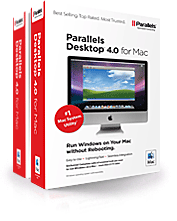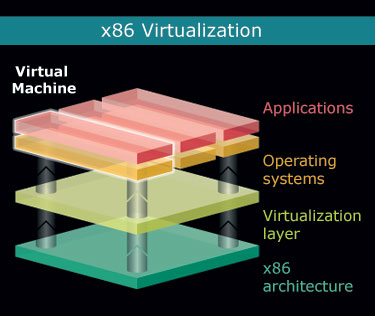
I don't own a Mac (yet), but it looks like the latest release of Parallels virtualization software, Parallels Desktop 4 for Mac, caused quite an excitement among the fans. I thought I'd share the links with you.
Virtualization news and reviews

I don't own a Mac (yet), but it looks like the latest release of Parallels virtualization software, Parallels Desktop 4 for Mac, caused quite an excitement among the fans. I thought I'd share the links with you.

Many of us have heard about hardware virtualization, but as far as I can see there is still a lot of confusion around this term and surrounding technologies, so today I've decided to give a really quick intro. Some time in the future, I'll probably cover this topic in detail.
Kris Buytaert has just posted a great post on Virtualization.com: Looking Back at a Decade of Open Source Virtualization. While it's a lengthy article, it's definitely worth your read if you're curious about the history of virtualization, primarily desktop virtualization.
I come from Unix system administration background, and have been in this industry for just over 10 years – long enough to recognize all the names and technologies in the article and to testify: indeed, there were quite a few ways of running graphical desktop sessions remotely long before 2006 or 2007. Some of them are not as simple to use, but almost no technology stays stale – new approaches are being developed daily, and you couldn't be more spoiled for choice of desktop virtualization than you are today.
Have a look at the Open Source Virtualization reivew, I'm sure you'll like it.
Kevin Lees has just posted a great article on the Virtual Strategy magazine pages, called PMP'n Virtualization – Part One
I really like the way he put most of the advantages of adopting virtualization technologies in just a fwe paragraphs, and happen to agree that such a complex set of technologies brings not only benefits, but also risks, and definitely needs a structured approach to its implementation.
Here's just a few lines from the original article, please read it in full if you're interested:
Desktop virtualization changes the way IT provides the desktop infrastructure. In addition to making the low cost, thin client desktop a tenable solution, hosting the “PC” in datacenter-resident virtual machines fundamentally changes how desktops are managed by IT.
…
Virtualization, specifically the speed with which virtual machines can be created and deployed, supports a faster IT response to changing business needs. The cycle time from business need recognition to business solution implementation by IT will continue to shrink as IT standardizes on virtual machine usage.